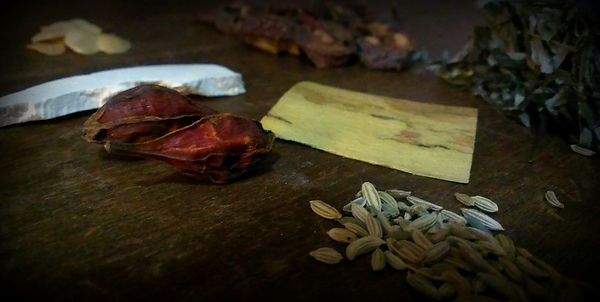Acupuncture & Herbal Medicine
Beth Bloomfield, L. Ac

Traditional Asian Herbal Therapy
Herbal medicine has been used to good effect for thousands of years. Chinese herbal medicine differs from other traditional systems in that it combines herbs into formulas for enhanced effect and increased safety. These herbal formulas are designed to not only help with symptom management, but to get to the root causes of dysfunction in the body.
Herbs can be taken as teas, capsules or granules, or may be used topically on the surface of the body.
Ask your practitioner if herbs are helpful for your condition.
Always let us know about any changes in your medication regimen or any known allergies or intolerances. We check all formulas for known incompatibilities with allopathic drugs and supplements.
Myofascial Therapies
Cupping
Cupping is the application of suction to the surface of the body for therapeutic effect. It has been used for thousands of years in a myriad of cultures, both East and West. In traditional cupping, a container is heated and is then placed on the skin to provide suction. Modern cupping may alternately use cups with pump or pneumatic suction. Cupping has become more normative in recent years, with its characteristic circle-marks becoming a common sight on internationally renowned athletes. Cupping helps the body heal quickly, as it causes a hyper-perfusion of blood to an injured area. Because it mechanically decompresses tissues, it can help conditions where there is muscular tightness or mild impingements. Since it improves blood circulation and flow of extracellular fluids, the body can better rally its functions around a weak or injured area. We also use it frequently as an adjunct for cough and wheezing, where it relaxes tired and constricted intercostal muscles, as well as mobilizes the response of the body’s immune system.
Gua sha
Gua sha is a less widely known form of instrument-assisted bodywork. It utilizes a massage tool to manipulate the soft tissues of the body. With gua sha, the tissue is pushed with the gua sha tool in a way that provides a stretch to the fascia. Like cupping, it is utilized as a myofascial therapy that also has the systemic effect of moving extracellular fluid, so is often implemented for immune support also. Recipients of gua sha technique will sometimes remark that it feels as though the procedure is “combing out their muscle knots.” Commonly described as muscule knots, trigger points are palpable, hyper irritable areas of muscle tissue. Gua sha provides a stimulus that can release these trigger points. The therapy produces a redness to the skin that indicates an increased introduction of blood to the superficial soft tissues. There have been some studies that suggest gua sha may have an anti-inflammatory effect. Graston technique, more often used by physical therapists and chiropractors, is a modern cousin of gua sha.
Tui na
Tui na is a specialized form of massage that, like acupuncture, has a several-thousand-year history in China and is relatively new to the Western world. Literally meaning push-grasp, it involves techniques that provide pressure and stretch to the fascia of the muscles. Some of its techniques may be familiar to those who have received other types of massage, but tui na has many unique manipulations. It utilizes acupressure, but also rhythmic techniques meant to energize the body, in addition to joint mobilization methods. Tui na excels at breaking up abnormal postural holding patterns that result from trauma or systemic disharmony. Tui na is often used in conjunction with heat and herbal topicals, including various liniments, plasters and ointments.
It is worth noting it is normal and expected to have painless red marks from both cupping and gua sha, but tui na should not leave marks or bruises. Your practitioner should be able to tailor the therapy to your comfort level.